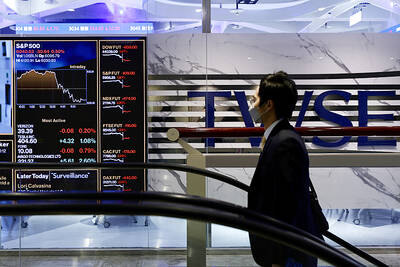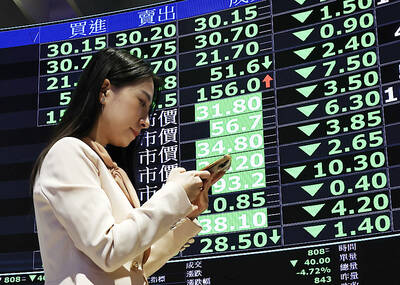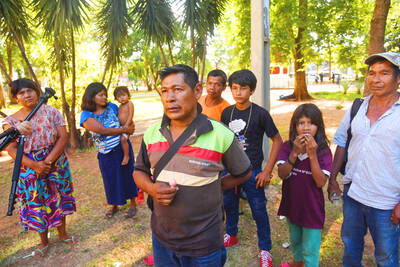The US economy faces risks from a potential resurgence of COVID-19 and from the failure so far of the US Congress to provide additional financial support for struggling individuals and businesses.
That judgement emerged from a survey released yesterday by the National Association for Business Economics (NABE) of 52 forecasters who were polled last month.
Among the forecasters, 55 percent said they regarded a second wave of COVID-19 cases as the most serious threat.
Twenty percent said they thought a lack of further government economic aid would pose the biggest risk.
The inability of Democrats and Republicans to forge a compromise has meant that unemployed Americans are no longer receiving a federal unemployment benefit. Support for small businesses has also expired. States and localities, many of which have suffered sharp declines in tax revenue, are struggling, too, without further federal assistance.
Similar to many other economists, the NABE’s forecasters have estimated that the US economy, as measured by GDP, grew at a 25 percent annual rate in the July-to-September quarter. That would be the largest quarterly gain on records dating to 1947.
However, it would follow an even bigger contraction in the April-to-June quarter, when COVID-19 paralyzed much of the US economy.
For the current quarter, the NABE panel forecast a 4.9 percent annual growth rate.
The recovery from the pandemic recession, in the view of the forecasters, would remain sluggish in coming months. A majority of them do not expect GDP to return to its pre-pandemic levels until sometime in 2022.
For all of this year, the panel expects GDP to decline 4.3 percent. That would be the US economy’s first full-year contraction since a 2.5 percent fall in 2009 at the end of the Great Recession.
For next year, the forecasters expect growth of 3.6 percent.
“NABE panelists have become more optimistic, on balance, but remain concerned about a potential second-wave of COVID-19,” said Eugenio Aleman, an economist at Wells Fargo Bank and the chair of the NABE survey panel.
On the danger that the US economy might suffer a double-dip recession, in which GDP would shrink again, 51 percent of the forecasters estimated the chances at 20 percent or less. Only 12 percent saw the likelihood at 50 percent or more.
More than half the panelists believe that 10 to 20 percent of the jobs that have been lost to the pandemic recession are permanently gone, with many hotels, restaurants, retailers and entertainment venues unable to reopen.

SELL-OFF: Investors expect tariff-driven volatility as the local boarse reopens today, while analysts say government support and solid fundamentals would steady sentiment Local investors are bracing for a sharp market downturn today as the nation’s financial markets resume trading following a two-day closure for national holidays before the weekend, with sentiment rattled by US President Donald Trump’s sweeping tariff announcement. Trump’s unveiling of new “reciprocal tariffs” on Wednesday triggered a sell-off in global markets, with the FTSE Taiwan Index Futures — a benchmark for Taiwanese equities traded in Singapore — tumbling 9.2 percent over the past two sessions. Meanwhile, the American depositary receipts (ADRs) of Taiwan Semiconductor Manufacturing Co (TSMC, 台積電), the most heavily weighted stock on the TAIEX, plunged 13.8 percent in

A wave of stop-loss selling and panic selling hit Taiwan's stock market at its opening today, with the weighted index plunging 2,086 points — a drop of more than 9.7 percent — marking the largest intraday point and percentage loss on record. The index bottomed out at 19,212.02, while futures were locked limit-down, with more than 1,000 stocks hitting their daily drop limit. Three heavyweight stocks — Taiwan Semiconductor Manufacturing Co (TSMC, 台積電), Hon Hai Precision Industry Co (Foxconn, 鴻海精密) and MediaTek (聯發科) — hit their limit-down prices as soon as the market opened, falling to NT$848 (US$25.54), NT$138.5 and NT$1,295 respectively. TSMC's

TARIFFS: The global ‘panic atmosphere remains strong,’ and foreign investors have continued to sell their holdings since the start of the year, the Ministry of Finance said The government yesterday authorized the activation of its NT$500 billion (US$15.15 billion) National Stabilization Fund (NSF) to prop up the local stock market after two days of sharp falls in reaction to US President Donald Trump’s new import tariffs. The Ministry of Finance said in a statement after the market close that the steering committee of the fund had been given the go-ahead to intervene in the market to bolster Taiwanese shares in a time of crisis. The fund has been authorized to use its assets “to carry out market stabilization tasks as appropriate to maintain the stability of Taiwan’s

In a small town in Paraguay, a showdown is brewing between traditional producers of yerba mate, a bitter herbal tea popular across South America, and miners of a shinier treasure: gold. A rush for the precious metal is pitting mate growers and indigenous groups against the expanding operations of small-scale miners who, until recently, were their neighbors, not nemeses. “They [the miners] have destroyed everything... The canals, springs, swamps,” said Vidal Britez, president of the Yerba Mate Producers’ Association of the town of Paso Yobai, about 210km east of capital Asuncion. “You can see the pollution from the dead fish.